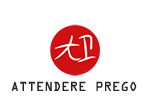Nature of TaiJiQuan
Discovering the Formless Nature of TaiJiQuan: Philosophical Principles and Unveiled Secrets
What is the formless nature of TaiJiQuan? Does TaiJiQuan truly possess a mysterious force?
Judging something we do not understand is a common action, and unfortunately, we often fall into the error of doing so. This can be attributed to our human nature and our tendency to form quick and superficial opinions based on limited information or preconceptions. When we judge something without having a deep understanding of the subject, our eyes are filled with ignorance and incapable of evaluating properly.
To judge and criticize adequately, it is essential to acquire in-depth knowledge and study of the subject in question. This process takes time, dedication, and an open mind. Before passing judgment, it is necessary to carefully examine the facts, explore different perspectives, and understand the context in which the subject fits. Only through study and knowledge are we able to formulate informed judgments and meaningful assessments.
Within the realm of TaiJiQuan, misunderstandings and prejudices often arise due to a lack of deep knowledge. Many regard TaiJiQuan as a mere slow dance, devoid of spiritual purpose and martial validity, intended solely for the well-being of the elderly. However, these superficial interpretations overlook the philosophical depth and the internal movements’ complexity that characterize TaiJiQuan.
To fully comprehend the philosophy that gave rise to these movements, it is necessary to explore the concept of formlessness. Formlessness refers to the non-action of true conscious action, when we connect with the natural “system” of things. It is a process that requires years of meditation to transcend the substance of form itself. However, before embarking on this profound meditation, it is essential to balance the chakras and purify the body from any “impurities” that may pollute inner harmony.
In Taoist philosophy, fluidity and harmony are fundamental concepts that relate to understanding the natural flow of the universe and the pursuit of inner and outer balance. According to Taoism, everything in the universe is interconnected and constantly changing, and achieving fluidity and harmony involves abandoning resistance and following the natural course of events.
The concept of fluidity in Taoism is represented by the notion of “wu wei,” which literally means “action without action.” Wu wei represents the idea of acting spontaneously and effortlessly, in harmony with the natural flow of the universe. It means not opposing the course of events but adapting and flowing with it. When practicing wu wei, one avoids forcing and struggling against the current, allowing things to develop naturally. This attitude of intentional non-action leads to greater fluidity in actions and relationships, creating a state of harmony with the surrounding environment.
Harmony, in the Taoist context, is closely linked to fluidity. The goal is to find a balance between complementary opposites, such as yin and yang, heaven and earth, masculine and feminine. Harmony is achieved when these opposites are in dynamic equilibrium, without one dominating the other. In Taoist harmony, there is no concept of static perfection, but rather an understanding of the natural cycles of growth and decline. It is an acceptance of change and a search for stability through adaptation.
Taoist practice aims to cultivate fluidity and harmony through self-observation and self-cultivation. Taoist teachings emphasize the importance of being aware of one’s body, mind, and emotions, and seeking balance among them. Through meditation, breathing, and physical exercise, one seeks to rebalance vital energy, known as “qi,” and achieve a state of inner serenity.
The ultimate goal of fluidity and harmony in Taoism is to reach a state of “Ziran,” which means “following nature.” This state of being implies living in accordance with one’s authentic nature, abandoning social conditioning and external expectations. It means being in tune with the flow of the universe, allowing life to unfold naturally without resistance.
M. Davide De Santis

